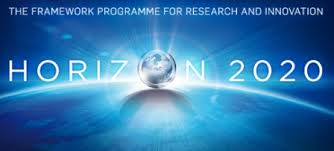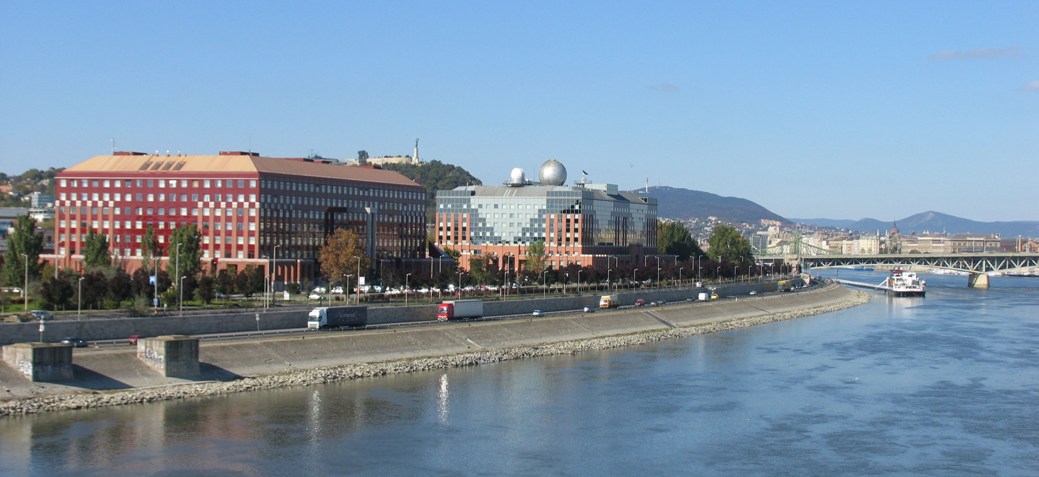Other Links
For other information, see the top menu bar!

The GALNUC Astrodynamics and Statistical Mechanics Group (PI: Bence Kocsis) at Oxford and Eötvös does research on topics related to galactic dynamics, dense stellar systems, physics of compact objects, statistical mechanics, ordered/disordered systems, and phase transitions. The group is funded by the ERC Starting Grant GalNUC and strives to develop a comprehensive model to describe the long term behavior of astrophysical multibody systems using revolutionary multidisciplanary methods. The project has officially moved from Eötvös University to Oxford in July 2020 but we are continuing collaborations with Eötvös.
We solve some of the major unsolved questions of galactic nuclei. Galactic nuclei host a central supermassive black hole, a dense population of stars and compact objects, and in many cases a bright gaseous disk feeding the supermassive black hole. The observed stellar distribution exhibits both spherical and counterrotating disk-like structures. Existing theoretical models cannot convincingly explain the origin of the stellar disks. Is there also a “dark cusp” or “dark disk” of stellar mass black holes? Are there intermediate mass black holes in the Galactic center? We examine the statistical physics of galactic nuclei and their long term dynamical evolution. A star orbiting a supermassive black hole on an eccentric precessing orbit covers an axisymmetric annulus. The long-term gravitational interaction between such annuli is similar to the Coulomb interaction between axisymmetric molecules constituting a liquid crystal. We apply standard methods of condensed matter physics to examine these astrophysical systems. The observed disk and spherical structures represent isotropic-nematic phase transitions. We derive the phase space distribution and time-evolution of different stellar components including a population of black holes. Further, we investigate the interaction of a stellar cluster with a gaseous disk, if present. This leads to the formation of gaps, warps, and spiral waves in the disk, the redistribution of stellar objects, and possibly the formation of intermediate mass black holes. We explore the implications for electromagnetic and gravitational wave observatories. Dark disks of black holes could provide the most frequent source of gravitational waves for LIGO and VIRGO. These detectors will open a new window on the Universe; the proposed project will open a new field in gravitational wave astrophysics to interpret the sources. We also explore implications for electromagnetic observations.
PI:
- Bence Kocsis — theoretical astrophysics including black hole physics, sources of gravitational waves, relativity, accretion physics, disk-satellite interactions, dynamics, statistical mechanics. publications and personal webpage
Postdoctoral fellows:
- Taras Panamarev — dynamics of nuclear star clusters and globular clusters, GPU supercomputing. publications
- Alexander Rasskazov — dynamics of nuclear star clusters, supermassive black holes. publications
- Hiromichi Tagawa — hydrodynamics in astrophysics, black hole accretion. publications (galnuc member: 2017-2020)
- Yohai Meiron — astrophysical dynamics of stellar systems, GPU supercomputing. publications and personal webpage (galnuc member: 2016-2018)
PhD students:
- Laszlo Gondan — gravitational wave astrophysics, expected measurement accuracy for eccentric mergers, astrophysical parameter distribution. publications
- Gergely Mathe — statistical mechanics of nuclear star clusters using time-evolution simulations.
- Akos Szolgyen — assembly of the nuclear star clusters and the formation of black hole disks using Monte Carlo Markov Chain simulations. publications
MSc students:
- Barnabas Deme — stochastic model of three body evolution.
- Kristof Jakovac — gravitational wave diffraction in general relativity, exploring the gravitational wave echo phenomenon.
- Adam Takacs — statistical mechanics of nuclear star clusters using mean field theory, non-additive systems, non-extensive thermodynamics publications


Eötvös University is located on the Danube River in Budapest within walking distance to the historic inner city. Budapest is the capital of Hungary, its political, cultural, commercial, industrial, and transportation center; Europe's most welcoming city. The city is known for its lively nightlife (see e.g. ruin pubs), its thermal baths (e.g. Szechenyi thermal bath), and its great food (see also My Amused Bouche).
-
T. Brandt, B. Kocsis
Astrophysical Journal, 812, 15 (2015) [ADS] [arXiv] [Scientific American] [Blog] [Zenodo]
-
R. M. OLeary, Y. Meiron, B. Kocsis
Astrophysical Journal Letters, 824, L12 (2016) [ADS] [arXiv] [Blogs]
-
A. P. Stephan, S. Naoz, A. M. Ghez, G. Witzel, B. N. Sitarski, T. Do, B. Kocsis
Monthly Notices of the Royal Academic Society, 460, 3494 (2016) [ADS] [arXiv]
-
Y. B. Ginat, Y. Meiron, N. Soker
Monthly Notices of the Royal Astronomical Society, 461, 3533 (2016) [ADS] [arXiv]
-
G. F. Kennedy, Y. Meiron, B. Shukirgaliyev, T. Panamarev, P. Berczik, A. Just, R. Spurzem
Monthly Notices of the Royal Astronomical Society, 460, 240 (2016) [ADS] [arXiv]
-
I. Bartos, B. Kocsis, Z. Haiman, S. Marka
Astrophysical Journal, 835, 165 (2017) [ADS] [arXiv]
-
Y. Meiron, B. Kocsis, A. Loeb
Astrophysical Journal, 834, 200 (2017) [ADS] [arXiv]
-
Z. Roupas, B. Kocsis, S. Tremaine
Astrophysical Journal, 842, 90 (2017) [ADS] [arXiv]
-
A. Sesana, Z. Haiman, B. Kocsis, L. Z. Kelley
Astrophysical Journal, 856, 42 (2018) [ADS] [arXiv]
-
L. Gondan, B. Kocsis, P. Raffai, Z. Frei
Astrophysical Journal, 855, 34 (2018) [ADS] [arXiv]
-
L. Gondan, B. Kocsis, P. Raffai, Z. Frei
Astrophysical Journal 860, 5 (2018) [ADS] [arXiv]
-
B. Hoang, S. Naoz, B. Kocsis, F. A. Rasio, F. Dosopoulou
Astrophysical Journal, 856, 140 (2018) [ADS] [arXiv][astrobites]
-
M. Arca-Sedda, B. Kocsis, T. Brandt
Monthly Notices of the Royal Academic Society, 479, 900 (2018) [ADS] [arXiv]
-
B. Kocsis, T. Suyama, T. Tanaka, S. Yokoyama
Astrophysical Journal, 854, 41, (2018) [ADS] [arXiv]
-
G. Fragione, I. Ginsburg, B. Kocsis
Astrophysical Journal, 856, 92 (2018) [ADS] [arXiv]
-
A. Takacs, B. Kocsis
Astrophysical Journal, 856, 113 (2018) [arXiv]
-
Y. Meiron, B. Kocsis
Astrophysical Journal, 855, 87 (2018) [ADS] [arXiv]
-
H. B. Perets, A. Mastrobuono-Battisti, Y. Meiron, A. Gualandris
submitted to Science [ADS] [arXiv]
-
T. Panamarev, B. Shukirgaliyev, Y. Meiron, P. Berczik, A. Just, R. Spurzem, C. Omarov, E. Vilkoviskij
Monthly Notices of the Royal Academic Society, 476, 4224 (2018) [ADS] [arXiv]
-
H Tagawa, M. Umemura
Astrophysical Journal, 856, 47 (2018) [ADS] [arXiv] [astrobites]
-
K. Hattori, N. Gouda, T. Yano, N. Sakai, H. Tagawa, J. Baba, J. Kumamoto
Monthly Notices of the Royal Academic Society, 484, 4540 (2019)
[ADS] [arXiv]
-
H. Tagawa, T. R. Saitoh, B. Kocsis
Physical Review Letters, 120, 261101 (2018) [ADS] [arXiv]
-
A. Szolgyen, B. Kocsis
Physical Review Letters, 121, 101101 (2018) [ADS] [arXiv]
[News]
-
G. Fragione, B. Kocsis
Physical Review Letters, 121, 161103 (2018) [ADS] [arXiv]
-
L. Barack, et al.; chapter I.5 by A. Askar and B. Kocsis
submitted to Classical Quantum Gravity [ADS] [arXiv]
-
Y. Meiron, B. Kocsis
submitted to the Astrophysical Journal [ADS] [arXiv]
-
G. Fragione, N. Leigh, I. Ginsburg, B. Kocsis
Astrophysical Journal, 856, 92 (2018) [ADS] [arXiv]
-
A. Rasskazov, G. Fragione, N. W. C. Leigh, H. Tagawa, A. Sesana, A. Price-Whelan, E. M. Rossi
submitted to the Astrophysical Journal [ADS] [arXiv]
-
K. T. Voggel, A. C. Seth, H. Baumgardt, S. Mieske, J. Pfeffer, A. Rasskazov
submitted to the Astrophysical Journal [ADS] [arXiv]
-
M. Arca-Sedda, G. Li, B. Kocsis
submitted to Monthly Notices of the Royal Academic Society [ADS] [arXiv]
-
L. Gondan, B. Kocsis
Astrophysical Journal, 871, 178 (2019) [ADS] [arXiv]
-
K. R. Corley, I. Bartos, L. P. Singer, A. R. Williamson, Z. Haiman, B. Kocsis, S. Nissanke, Z. Marka, S. Marka
submitted (2019) [ADS] [arXiv]
-
A. Rasskazov, B. Kocsis
submitted to the Astrophysical Journal (2019) [ADS] [arXiv]
-
B-M. Hoang, S. Naoz, B. Kocsis, W. Farr, J. McIver
submitted to the Astrophysical Journal Letters (2019) [ADS] [arXiv]
-
Y. Yang, I. Bartos, Z. Haiman, B. Kocsis, Z. Marka, N. C. Stone, S. Marka
submitted to the Astrophysical Journal Letters [ADS] [arXiv]
-
G. Fragione, B. Kocsis
submitted to the Astrophysical Journal (2019) [ADS] [arXiv]
-
A. Szolgyen, Y. Meiron, B. Kocsis
submitted to the Astrophysical Journal (2019) [ADS] [arXiv]



